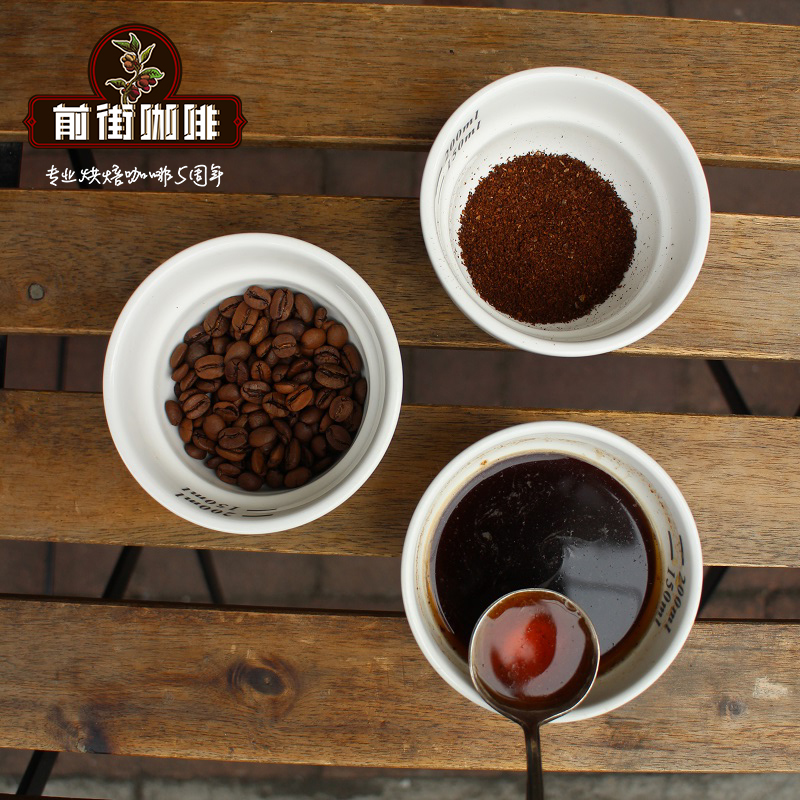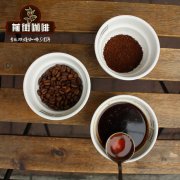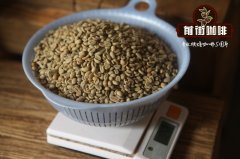Ecuadorian coffee beans [rumba coffee producing area] what is the flavor of Aklin Farmers' Association coffee? Ecuador

Professional coffee knowledge exchange more coffee bean information please follow the coffee workshop (Wechat official account cafe_style)
Ecuadorian coffee beans [rumba coffee producing area] what is the flavor of Aklin Farmers' Association coffee? What are the advantages of the Ecuadorian island coffee growing environment?
A cooperative organization of high-quality coffee raw bean producers in southern Ecuador bordering the Peruvian border zone, which is part of a larger alliance of coffee producers. The association has excellent coordination and leadership, which helps them position themselves as the top producers of Ecuadorian coffee, and the raw coffee beans from this cooperative have won many places in the Taza Dorada competition.
The Taza Dorada contest has been held for many years. Coffee farmers submit their high-quality coffee raw beans for national and international evaluation to determine which are the best micro-batches, which can be said to be Ecuador's COE. Unlike the COE system, Taza Dorada does not adopt an auction system, and the winning batches of raw coffee beans will almost be booked by buyers who know the goods. Small farmers in this region still maintain the fine tradition of growing traditional varieties such as Typica, Caturra and Bourbon, which has been the key to their success. The climate is very special in this area, humid almost all the year round, and the temperature fluctuates very comfortably, from 12 to 28 degrees Celsius, with an average of about 20 degrees Celsius, which is very suitable for coffee growth and reflects the flavor in the cup.
Most of the typical coffee and raw bean estates in southern Ecuador are organically grown, and the crops are very diverse. Corn, cabbage, bananas, bees, cattle, fish, fruit and coffee are grown together. Coffee leaf embroidery disease has been a threat to coffee bean producers in the region, and leaf rust has reduced Colombia's coffee production by 50% for a year or two. The simplest solution against leaf rust is intensive chemical applications, but coffee farmers in the region take a more determined organic approach because of their respect for the environment.
About 1000Km off the west coast of Ecuador in South America, the archipelago directly below the equator in the Pacific Ocean is Ecuador's Galapagos archipelago. The coffee produced here is rare and seldom circulated among ordinary consumers. The archipelago is recognized as a nature conservation area by the United Nations Educational, Scientific and Cultural Organization (USECO). The relevant law expressly stipulates that no chemicals or fertilizers can be used on the whole island, and of course, it is recognized by the OCIA of the United States as the place where organic coffee is produced. The coffee-growing area is concentrated on an island called San Cristobal, with a height of about 800m Mel 1200 m. Due to the island climate, the planting area is covered with thick clouds all the year round and has a dense variety of plants. Galapagos coffee, which is regarded as a treasure by coffee players all over the world, is grown in this primitive and natural super-perfect ecology. According to the relevant literature, French agronomist Don Manual Gobo brought Borubon seeds here in 1875 to open the coffee history of the Galapagos Islands. For a long time, these coffee trees were idle in the forest and allowed them to grow. It was not until 1990 that the Gonzalez-Duche family took over the reorganization. At present, the full name of the manor is "Hacienda El Cafetal San Cristabal". The coffee produced by it is regulated by strict environmental laws and regulations from planting to post-processing. The annual output is about 1150 bags
Rumba (Zumba), Zamora-Chinchipe
1300-1900 meters above sea level
Planting varieties: Typica, Kaddura and Bourbon
Small farmers, members of producers' cooperatives
The annual rainfall is about 1000-1500 mm
The temperature is 12-28 degrees Celsius.
The area is about 1.5 hectares per member of small farmers.
Treatment washing
Flavor: front citrus sour, berry aroma, middle peach aroma, tail green tea, cigarette with floral aroma, solid and rich taste
Filter cup: KONO filter cup
Water temperature: 90 degrees
Degree of grinding: small Fuji 3.5
Cooking method: the ratio of water to flour is 1:15, 15g powder, 25g water for the first time, steaming for 30s, 225g water for the second time, the extraction time is about 2:30 seconds.
Analysis: there are not many ribs at the bottom of the Kono cup, and the filter paper clings to the filter cup to achieve the purpose of limiting air flow, which can make water and coffee powder have longer contact soaking time in the filter cup and ensure the extraction time and extraction rate of rough grinding. In this way, the coffee powder can be fully extracted, enhance the mellow taste and make the taste more concentrated.
Flavor: well balanced, clean, thick and solid on the palate, with a long dark chocolate finish.
Important Notice :
前街咖啡 FrontStreet Coffee has moved to new addredd:
FrontStreet Coffee Address: 315,Donghua East Road,GuangZhou
Tel:020 38364473
- Prev

What are the flavor characteristics of Ecuador [Galapagos Islands coffee beans] bourbon varieties? Ecuador
Professional coffee knowledge exchange more coffee bean information please follow the coffee workshop (Wechat official account cafe_style) Ecuador [Galapagos Islands coffee beans] bourbon variety flavor characteristics? How to grow organic coffee beans in Ecuador? Ecuador is between Colombia and Peru, and Ecuador, which passes through the equator, produces Arabica coffee in South America.
- Next

The cultivation of low-yield Ecuadorian organic coffee beans? And Guadore coffee beans have a special flavor.
Professional coffee knowledge exchange more coffee bean information please follow the coffee workshop (Wechat official account cafe_style) the cultivation of small Ecuadorian organic coffee beans? What are the flavor characteristics of Guadore coffee beans? Ecuador Ecuador is a country with islands in South America. It has a long history of growing coffee. In the early 19th century, Ecuador compared to Ecuador coffee.
Related
- Detailed explanation of Jadeite planting Land in Panamanian Jadeite Manor introduction to the grading system of Jadeite competitive bidding, Red bid, Green bid and Rose Summer
- Story of Coffee planting in Brenka region of Costa Rica Stonehenge Manor anaerobic heavy honey treatment of flavor mouth
- What's on the barrel of Blue Mountain Coffee beans?
- Can American coffee also pull flowers? How to use hot American style to pull out a good-looking pattern?
- Can you make a cold extract with coffee beans? What is the right proportion for cold-extracted coffee formula?
- Indonesian PWN Gold Mandrine Coffee Origin Features Flavor How to Chong? Mandolin coffee is American.
- A brief introduction to the flavor characteristics of Brazilian yellow bourbon coffee beans
- What is the effect of different water quality on the flavor of cold-extracted coffee? What kind of water is best for brewing coffee?
- Why do you think of Rose Summer whenever you mention Panamanian coffee?
- Introduction to the characteristics of authentic blue mountain coffee bean producing areas? What is the CIB Coffee Authority in Jamaica?

